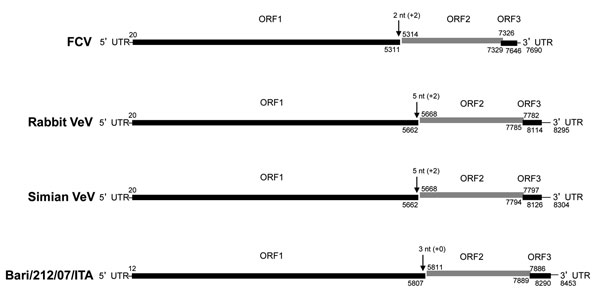Volume 21, Number 8—August 2015
Dispatch
Detection and Full-Length Genome Characterization of Novel Canine Vesiviruses
Figure 1

Figure 1. Genome organization of vesiviruses (VeVs). The genomic organization and open reading frame (ORF) usage are shown for representative viruses in the main VeV genetic groups: feline calicivirus (FCV) strain F9 (GenBank accession no. M86379), rabbit VeV (GenBank accession no. AJ866991), simian VeV strain Pan1 (GenBank accession no. AF091736), and canine VeV Bari/212/07/ITA. Numbers above and below the genome bar indicate the nucleotide (nt) position of the ORF initiation and termination, respectively. UTR, untranslated region.
Page created: July 15, 2015
Page updated: July 15, 2015
Page reviewed: July 15, 2015
The conclusions, findings, and opinions expressed by authors contributing to this journal do not necessarily reflect the official position of the U.S. Department of Health and Human Services, the Public Health Service, the Centers for Disease Control and Prevention, or the authors' affiliated institutions. Use of trade names is for identification only and does not imply endorsement by any of the groups named above.